Are you planning to move your kitchen cabinets? If so, you’re in for a big job. Kitchen cabinets are heavy and can be difficult to move if you’re not prepared. In this article, we will provide a complete guide on how to move kitchen cabinets. We’ll answer common questions and give you some useful tips that will make the process easier. Let’s get started!
How to Move Kitchen Cabinets
Moving kitchen cabinets can be a daunting task. It’s best to allow plenty of time for this project and get help from friends or family if possible. Here are some tips to make the process easier:
- Clear Out Everything in the Cabinets: Before you remove any components, you need to clear out all items stored inside the cabinets. This includes food, dishes, cookware, etc. You don’t want anything getting broken or damaged during the move;
- Disconnect Electrical Components: If your kitchen cabinetry contains electrical outlets or lights then you’ll need to disconnect these before taking down the cabinets. Make sure that all of the wires and components are labeled clearly so that they can be reassembled correctly;
- Take Measurements: Before you attempt to remove the cabinets, take precise measurements of where they are located. This will help when you go to install them in their new location;
- Remove Fastenings and All Hardware: Carefully unscrew all fastenings, hinges, and hardware from the cabinet and keep these together in a safe place until they are needed again. A small box or plastic bag can be used for this purpose;
- Lift the Cabinet Out: Once everything is disconnected, carefully lift the cabinet up and out using two people if possible. Place it on a flat surface such as a dolly or trolley, which can be rented from local hardware shops, for easy transport;
- Install in the New Location: Once you arrive at your new location, it’s time to install the cabinets. Measure twice and make sure that everything is level and secure before putting any items back inside the cabinet;
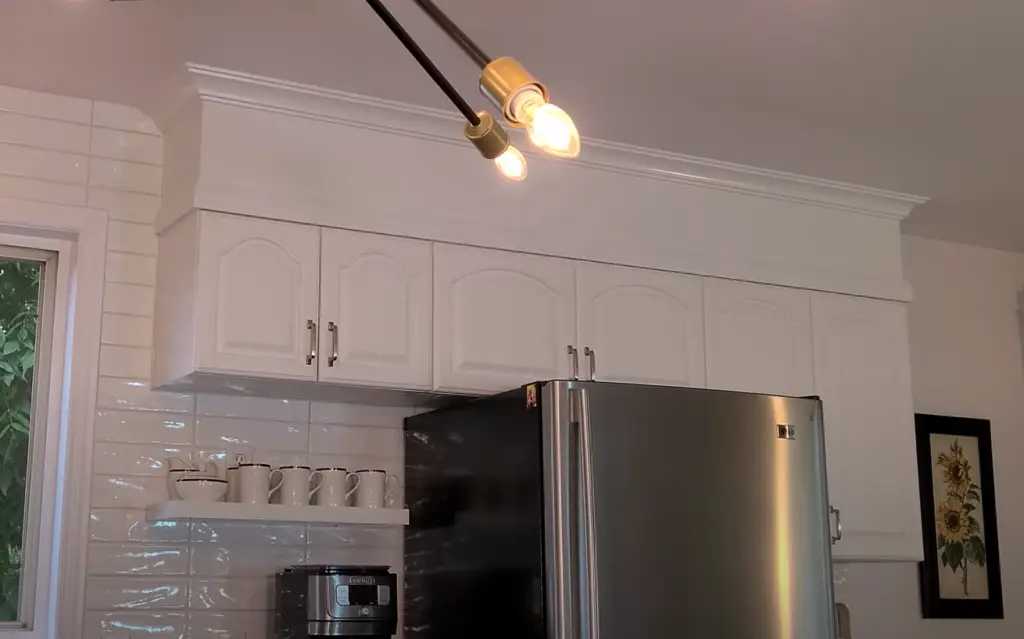
Preparing to Take Out Kitchen Cabinets
When you’re ready to take out your kitchen cabinets, there are a few things that you’ll need to do in order to ensure everything goes smoothly. Here’s what you should keep in mind:
- Turn Off the Power and Gas: Before taking apart any electrical components, turn off the power and gas at the main switch. This will prevent any accidents or shocks while working on the cabinet;
- Clear Out Adjoining Areas: Make sure that all adjoining areas are clear of obstacles such as furniture or appliances so that you have plenty of space to remove the cabinets;
- Put Down Tarps and Floor Coverings: To protect the floors from scratches and scuffs during removal, put down tarps or other floor coverings;
- Have the Right Tools: Make sure that you have all of the necessary tools on hand such as screwdrivers, pliers, and wrenches for unscrewing fastenings and hardware;
- Get Help: If at all possible, get help from friends or family to lift out the cabinets once everything is removed and disconnected. This will make the process much smoother and quicker;
Removing Cabinets to Reuse
If you are taking out your kitchen cabinets to reuse or re-purpose, then there are a few extra steps that need to be taken. Here’s what you should do:
- Make Sure Everything is Disconnected: Before removing the cabinet, make sure that all components and hardware are disconnected properly. This includes electrical wiring, plumbing pipes, etc.;
- Label Each Component: To make installation easier in its new location, label each component with a permanent marker so that it can be identified easily later on;
- Remove Doors and Drawers Separately: It’s best to remove doors and drawers separately from the main frame of the cabinet as this will make them easier to transport;
- Wrap Components Securely: Use bubble wrap, packing paper, blankets, or other materials to wrap components securely before placing them into boxes or bins for safe storage during the move;
- Transport Carefully: Once everything is wrapped and packed up, be sure to transport the cabinets with care so that they don’t get scratched or damaged in transit;
Prepare Walls for Cabinet Reconfiguration
If you are planning to change the configuration of your kitchen cabinets, then you’ll need to prepare the walls for this. Here’s what you should do:
- Ask a Professional for Advice: It’s best to consult with a professional carpenter or contractor before attempting any wall reconfiguration. This will ensure that any changes are done correctly and safely;
- Assess Wall Strength: Make sure that the walls are strong enough to support the weight of the new cabinet configuration by tapping them lightly with your knuckles. If they sound hollow or weak, then additional support may be needed before proceeding;
- Check Wiring and Plumbing: Before making any changes, make sure there is no electrical wiring or plumbing behind the walls that could be affected. If there is, then these will need to be moved and secured before continuing with the reconfiguration;
- Cover Surrounding Areas: To protect any exposed surfaces from dust or debris during installation, cover them with tarpaulins or plastic sheets beforehand;
- Measure Carefully: Take measurements carefully twice before cutting or drilling into the wall to ensure everything fits correctly once the installation is complete;
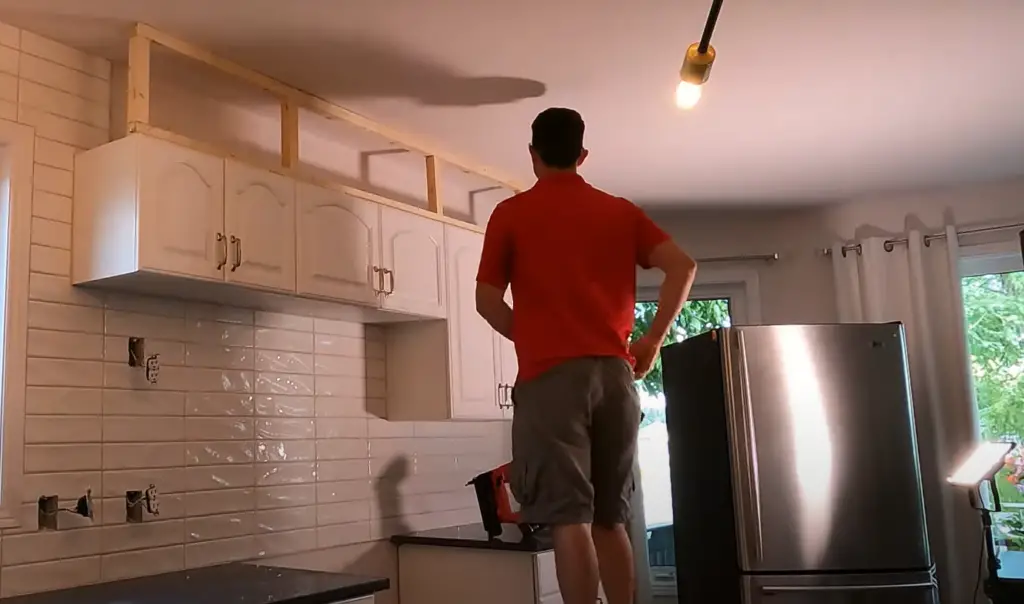
Rearranging Existing Kitchen Cabinets
If you want to rearrange your existing kitchen cabinets without making any changes, then there are a few things to keep in mind. Here’s what you should do:
- Unscrew and Disconnect Hardware: Before moving the cabinets around, make sure that all screws, fastenings, and hardware are disconnected properly;
- Use Blankets or Moving Sliders: To protect the floors from damage during movement, use blankets or furniture sliders when pushing or pulling the cabinets into their new position;
- Re-Level Cabinets: If necessary, use a leveler tool to ensure that the cabinets are placed properly before reattaching them to the walls;
- Secure Cabinets in Place: Use screws, brackets, or other fastening hardware to secure the cabinets firmly in place before reattaching any components or hardware;
- Check for Readjustments: After securing the cabinets, check to make sure that all components and doors are aligned properly and open/close correctly. If not, readjust as necessary;
Installing Kitchen Cabinets
Once you have chosen the cabinets for your kitchen, it’s time to install them. Here’s what you should do:
- Prepare the Walls: Before beginning installation, make sure that the walls are prepared properly so that they can support the weight of the cabinets and any hardware or components attached to them;
- Attach Hanging Rails: If applicable, attach hanging rails or other necessary fixtures to the wall before installing the cabinet;
- Place Cabinets in Position: Carefully place each cabinet into position one at a time using help from another person if needed;
- Adjust Cabinet Levels: It’s important to adjust each cabinet so that they are level with one another before securing them in place;
- Secure Cabinets: Use screws, brackets, or fastening hardware to secure the cabinets firmly to the walls. Make sure that there is no movement when applying pressure to each cabinet;
- Install Components and Hardware: Finally, install any components such as drawers and doors, as well as any necessary hardware (e.g., handles) [1];
Some Useful Tips
If you’re moving kitchen cabinets, here are some tips to help make your job easier:
- Make sure you have all the necessary tools such as a hammer, screwdrivers and drill;
- Measure the cabinets carefully before removing them from their current location – this will ensure that they fit correctly in their new location;
- Be aware of any sharp edges on the cabinets which could cause injury when handled – use proper protection such as gloves and eye protection if needed;
- Keep the weight evenly distributed across all sides of the cabinet to avoid damage or strain on its structure when moving it;
- Always move with a partner to help with lifting and carrying, as the cabinets can become quite heavy with all their contents;
- If your kitchen cabinets are being moved to a new home, make sure they are well-protected by using bubble wrap or padding them with blankets and furniture covers;
- Once in their new location, you may need to level them and adjust the hinges – this can be done easily with an adjustable wrench or screwdriver depending on your cabinet type;
Finally, remember that replacing kitchen cabinets is expensive – so take your time and handle the old ones with care!

FAQ
How easy is it to move a kitchen cabinet?
Moving a kitchen cabinet is not as difficult as it might sound, but it does require some effort and preparation. The job will go more smoothly if you’re organized. First of all, make sure that the space you’re moving the cabinet to is large enough for it to fit in. It also helps to have a few friends or family members lend a hand if you need extra help lifting the cabinet. Start by emptying out all the contents of the cabinet and then removing any hardware or fixtures attached to it. Once all these are taken care of, carry your cabinet out of its current position and transport it where you want it to be placed. [2]
Can you move and reuse kitchen cabinets?
Yes! It’s definitely possible to move and reuse kitchen cabinets. There are a few things you’ll need to consider in order to make sure it’s done correctly. First, measure the space your current cabinets occupy so that when you move them, the new placement lines up properly. This includes measuring vertical and horizontal distances between walls, appliances, and other obstacles. Make note of any needed supports or bracing that may be required to keep everything secure in the new placement.
Once you reach the new placement, double-check all measurements to make sure it lines up perfectly with existing appliances and other obstacles. Taking your time is key here – if done incorrectly, cabinets can be damaged or even cause injury due to an improper fit. After everything is locked in place with screws or nails, you’ll be ready to reinstall the doors back onto the cabinet frames!
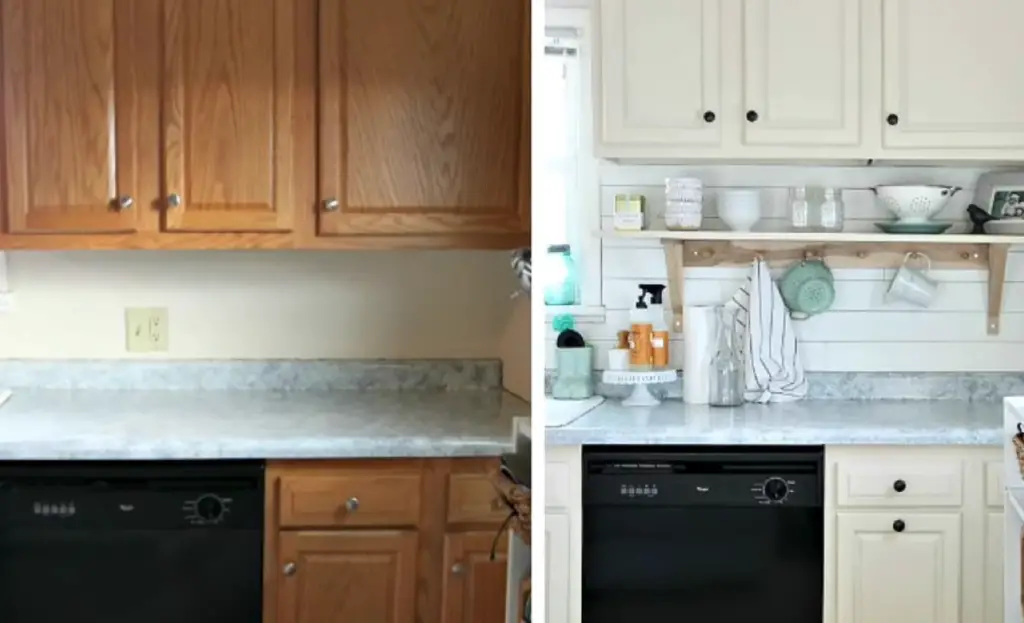
Can cabinets be moved up?
Yes, it is possible to move kitchen cabinets up or down. This may be a solution if you’re dealing with a low ceiling or simply want to change the height of your cabinets. It’s important to do this carefully and not attempt any shortcuts; specialist help will be necessary in order to ensure that everything is done correctly and safely.
When moving kitchen cabinets up, the base must first be secured onto the wall studs before adding additional support along its length. You should also make sure that your countertop can accommodate the new height of your cabinet before making changes as, otherwise, you may find yourself needing to replace it. The position of power outlets and plumbing lines needs to be taken into consideration when deciding how high to move your cabinet.
Additionally, the wall behind your cabinets must be reinforced to ensure that when you move them up it does not damage the structure. Special care should also be taken with any wiring and plumbing lines inside the cabinet as these may have to be rerouted or modified in order to accommodate the new position of the cabinet.
In summary, moving kitchen cabinets up can be a viable solution if you are dealing with a low ceiling or simply want to change the height of your cabinets. Be sure to seek help from a specialist who can advise on all aspects of this project before attempting it yourself, and make sure that other elements such as power outlets and plumbing lines can accommodate accordingly. Lastly, don’t forget to reinforce the wall behind your cabinets to ensure that they are securely fastened.
How do you move kitchen wall cabinets?
Moving kitchen wall cabinets requires some planning and patience. Depending on the size of your cabinets and the layout of your kitchen, there are different approaches you can take to move them safely.
The first step is to remove all items from inside the cabinets and brace any loose shelves with packing tape for extra stability during transport. Next, unscrew the cabinet from the walls or ceiling – depending on its position – so that it’s free from fastenings. If your cabinet has a bulky top section, then you’ll also need to unscrew it from the base unit before removing both parts individually.
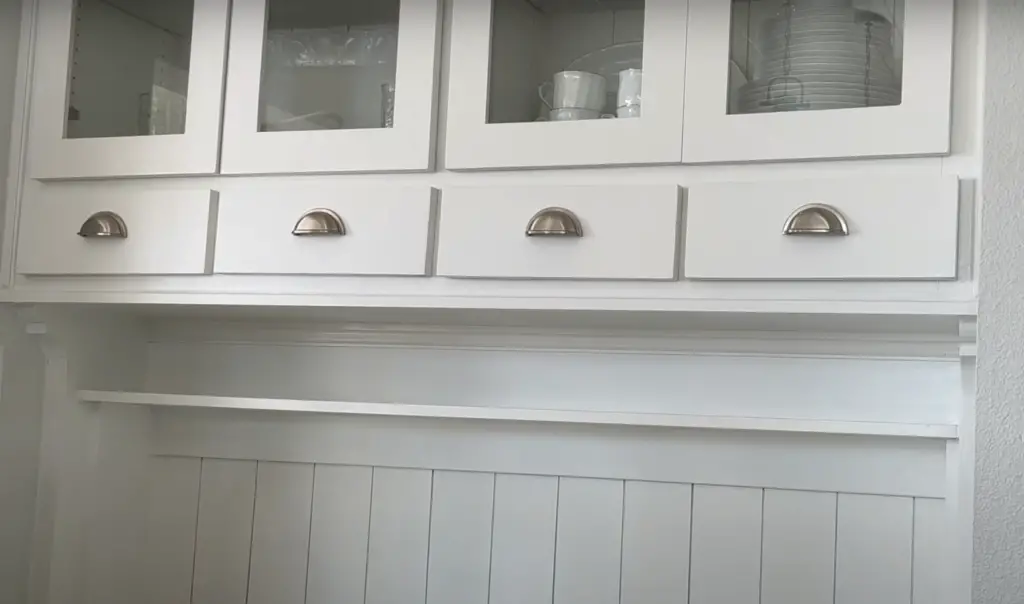
You can then lift each piece carefully onto a flat surface such as a trolley or furniture dolly. Make sure that you have at least two people helping to lift the cabinets, as they can be heavy. Once loaded onto a trolley, you should secure each piece with moving straps so that it’s firmly fixed in place during transportation.
Finally, if your new kitchen is on a different floor from your old one, then you may need to enlist the help of an elevator or furniture hoist to move the cabinets safely. Along with knowledgeable movers who have experience in relocating heavy items, these services are invaluable for making sure that everything arrives at its destination unscathed and intact. [4]
By taking all necessary precautions when moving kitchen wall cabinets – such as ensuring that you brace any loose shelves and use professional assistance where needed – you can ensure that your relocation goes as smoothly as possible.
Useful Video: Moving kitchen cabinets
Conclusion
At the end of the day, moving kitchen cabinets can be a daunting task. But with the right knowledge and supplies, you’ll be able to do it quickly and safely. From disconnecting power sources to proper removal techniques, these tips will help you navigate through the process successfully. Be sure to check for any local building codes or regulations in your area so you can keep up with safety standards when handling heavy objects like kitchen cabinets. With some patience and planning, you’ll be able to move your kitchen cabinets in no time! Good luck!
References:
- https://www.hunker.com/12002033/how-to-move-kitchen-cabinets
- https://www.angi.com/articles/moving-cabinets.htm
- https://www.renovateforum.com/f200/moving-reusing-kitchen-cabinets-worth-127892/
- https://homeguides.sfgate.com/move-kitchen-wall-cabinet-37284.html





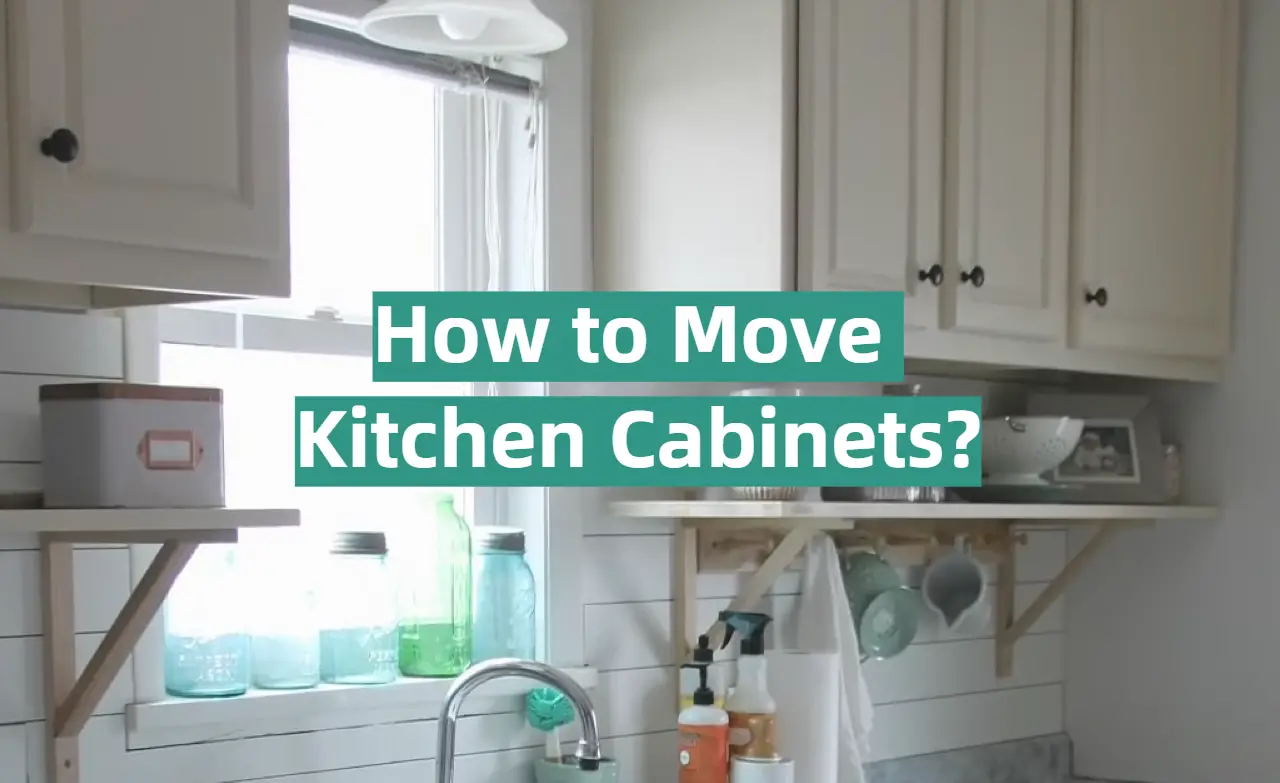








Leave a Reply